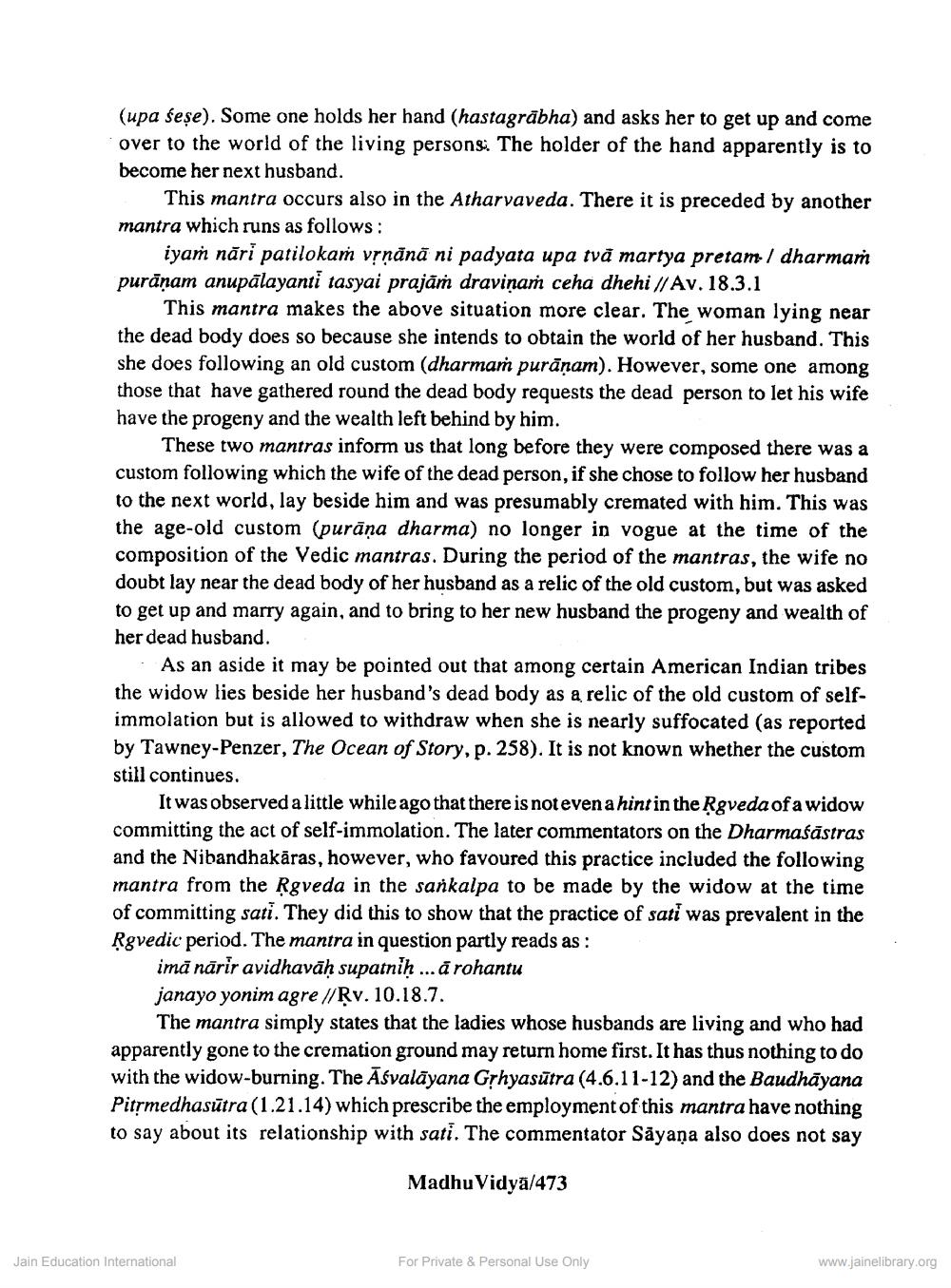________________
(upa seșe). Some one holds her hand (hastagrābha) and asks her to get up and come over to the world of the living persons: The holder of the hand apparently is to become her next husband.
This mantra occurs also in the Atharvaveda. There it is preceded by another mantra which runs as follows:
iyam nāri patilokam vrnänä ni padyata upa tvă martya pretam-/ dharmań purāņam anupālayanti tasyai prajām dravina ceha dhehi // Av. 18.3.1
This mantra makes the above situation more clear. The woman lying near the dead body does so because she intends to obtain the world of her husband. This she does following an old custom (dharmam purāņam). However, some one among those that have gathered round the dead body requests the dead person to let his wife have the progeny and the wealth left behind by him.
These two mantras inform us that long before they were composed there was a custom following which the wife of the dead person, if she chose to follow her husband to the next world, lay beside him and was presumably cremated with him. This was the age-old custom (purāna dharma) no longer in vogue at the time of the composition of the Vedic mantras. During the period of the mantras, the wife no doubt lay near the dead body of her husband as a relic of the old custom, but was asked to get up and marry again, and to bring to her new husband the progeny and wealth of her dead husband.
As an aside it may be pointed out that among certain American Indian tribes the widow lies beside her husband's dead body as a relic of the old custom of selfimmolation but is allowed to withdraw when she is nearly suffocated (as reported by Tawney-Penzer, The Ocean of Story, p. 258). It is not known whether the custom still continues.
It was observed a little while ago that there is not even a hint in the Ķgveda of a widow committing the act of self-immolation. The later commentators on the Dharmaśāstras and the Nibandhakāras, however, who favoured this practice included the following mantra from the Rgveda in the sankalpa to be made by the widow at the time of committing sati. They did this to show that the practice of sati was prevalent in the Rgvedic period. The mantra in question partly reads as :
imā nārir avidhavāḥ supatnih ... a rohantu janayo yonim agre //Ķv. 10.18.7.
The mantra simply states that the ladies whose husbands are living and who had apparently gone to the cremation ground may return home first. It has thus nothing to do with the widow-burning. The Āsvalāyana GȚhyasūtra (4.6.11-12) and the Baudhāyana Pitsmedhasūtra(1.21.14) which prescribe the employment of this mantra have nothing to say about its relationship with sati. The commentator Sayana also does not say
Madhu Vidyā/473
Jain Education International
For Private & Personal Use Only
www.jainelibrary.org




